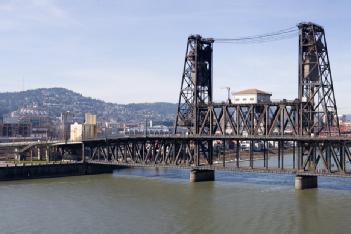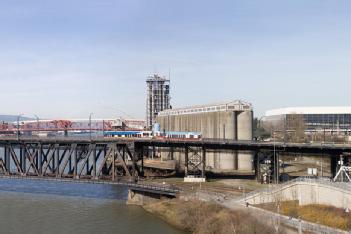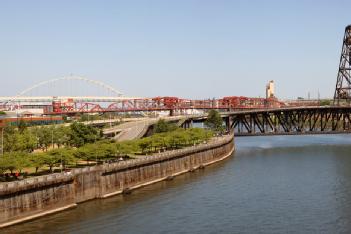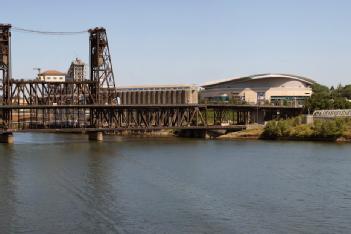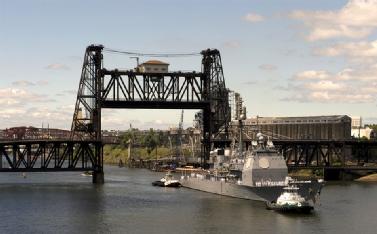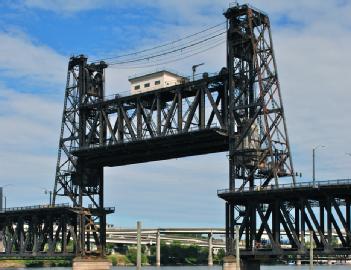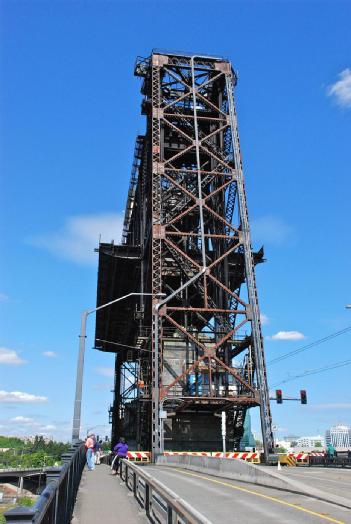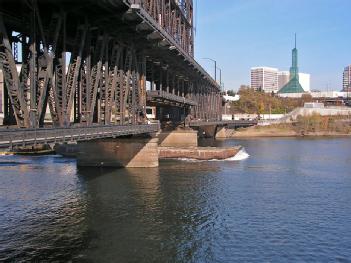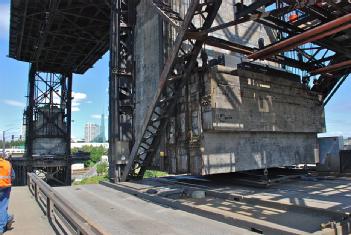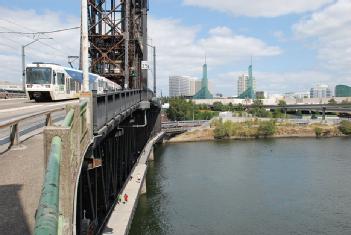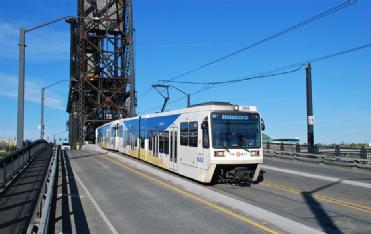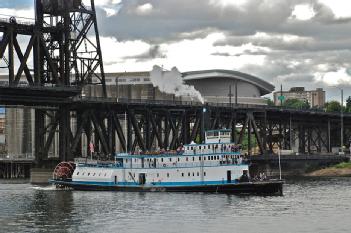
Steel Bridge |
97227 Portland, OR, United States of America (USA) (Oregon ) |
|
| Address |
419 N Steel Bridge
|
| Floor area | unfortunately not known yet |
Bridges and Tunnels
- Navy / Watercraft
- Trams
|
Opening times
|
|||||
|
Status from 03/2017
|
Free entry. | ||||
| Contact |
|
||||
| Homepage | |||||
| Location / Directions |
Portland is a seaport and the largest city in the U.S. state of Oregon and the seat of Multnomah County. It is in the Willamette Valley region of the Pacific Northwest, at the confluence of the Willamette and Columbia Rivers. |
| Description | From Wikipedia, the free encyclopedia: Steel Bridge Carries: Upper: 2 outer lanes for general traffic, 2 inner lanes solely for MAX Light Rail, and sidewalks on both sides Crosses: Willamette River Owner: Union Pacific Railroad Design: Through truss with a double vertical-lift span Width: 71 feet (22 m) Longest span: 211 feet (64 m) Clearance: below26 feet (7.9 m) closed, 72 feet (22 m) lower deck raised, 163 feet (50 m) fully raised Opened: 1912 (replaced 1888 bridge) History The bridge was completed in 1912 and replaced the Steel Bridge that was built in 1888 as a double-deck swing-span bridge. The 1888 structure was the first railroad bridge across the Willamette River in Portland. Its name originated because steel, instead of wrought iron, was used in its construction, very unusual for the time. When the current Steel Bridge opened, it was simply given its predecessor's name. Structure and lift operationThe lift span of the bridge is 211 feet (64 m) long. At low river levels the lower deck is 26 feet (7.9 m) above the water, and 163 feet (50 m) of vertical clearance is provided when both decks are raised. Because of the independent lifts, the lower deck can be raised to 72 feet (22 m), telescoping into the upper deck but not disturbing it. Each deck has its own counterweights, two for the upper and eight for the lower, totaling 9,000,000 lb (4,100 metric tons). The machinery house sits atop the upper-deck lift truss. The operator's room is suspended from the top of the lift-span truss, directly below the machinery house, so that the operator can view river traffic as well as the upper deck. After the 2001 addition of a pedestrian walkway on the lower deck, cameras and closed-circuit television monitors were added to allow the operator to view the lower-deck walkway. Until the bridge's mid-1980s renovation, the crossing gates blocking the roadway and sidewalks during raising of the upper-deck lift span were manually operated, rotated horizontally across the roadway by two "gate tenders", one on each side of the lift span. Small shacks for the gatekeepers were positioned on the roadway deck, between the inner and outer traffic lanes, but they were removed during the 1980s rebuilding and replaced by a new gate tender house positioned above the roadway, in the west lift tower. Powered crossing gates replaced the manual ones, and operation of the gates is now automated, controlled by the bridge operator |
[dsp_museum_detail.cfm]
| Data Compliance | More Information |
 travelportland.com
travelportland.com 